African cuisine is as diverse as its cultures and landscapes. Each dish tells a story of tradition, community, and flavor that transcends borders.
From the spicy stews of West Africa to the rice dishes of the East, these culinary delights are not just meals but experiences waiting to be savored.
Let’s explore 15 traditional African dishes that the world should definitely know about.
1. Injera
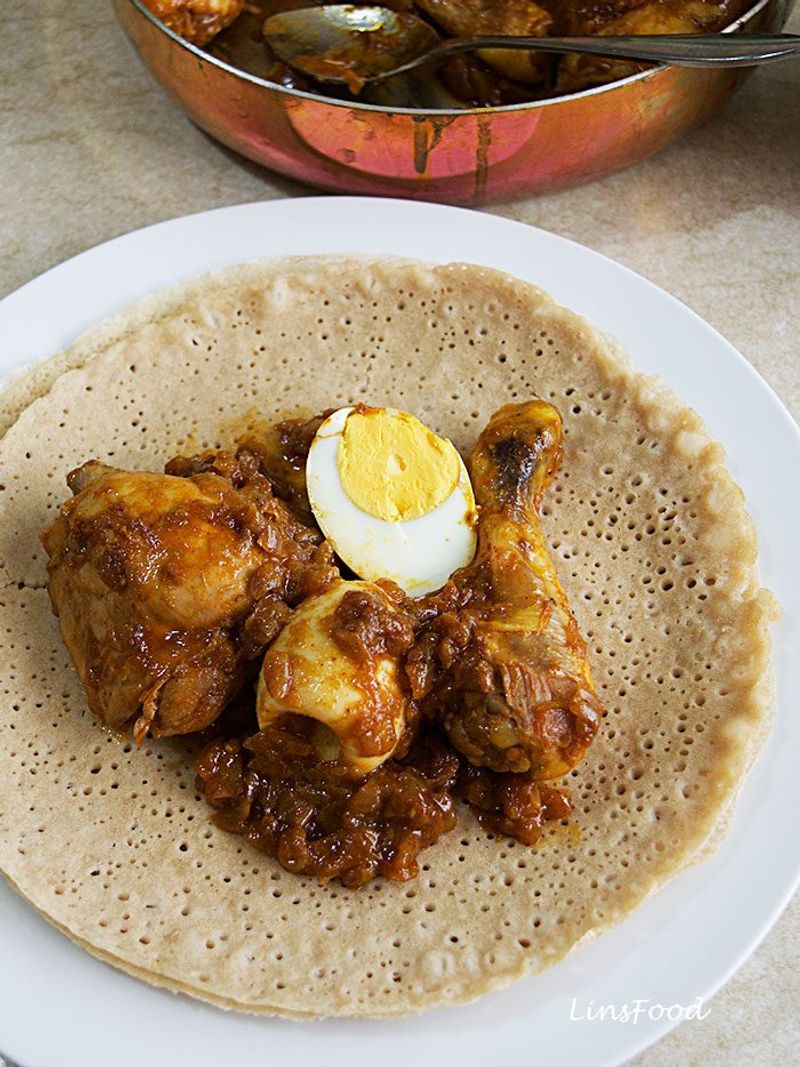
Injera, a staple in Ethiopia and Eritrea, is more than just a flatbread. This spongy, sour delight serves as both a plate and a utensil. Tear off a piece, scoop up some stew, and enjoy the unique combination of flavors. Its slightly sour taste comes from teff flour, a grain native to Ethiopia.
The bread is fermented for several days, creating its signature tangy flavor. Sharing injera is a communal experience, often enjoyed among family and friends.
Injera’s versatility is unmatched. It’s not only a delicious accompaniment but also a cultural icon. Eating with your hands adds to the sensory experience, making every meal a celebration of Ethiopian heritage.
2. Jollof Rice
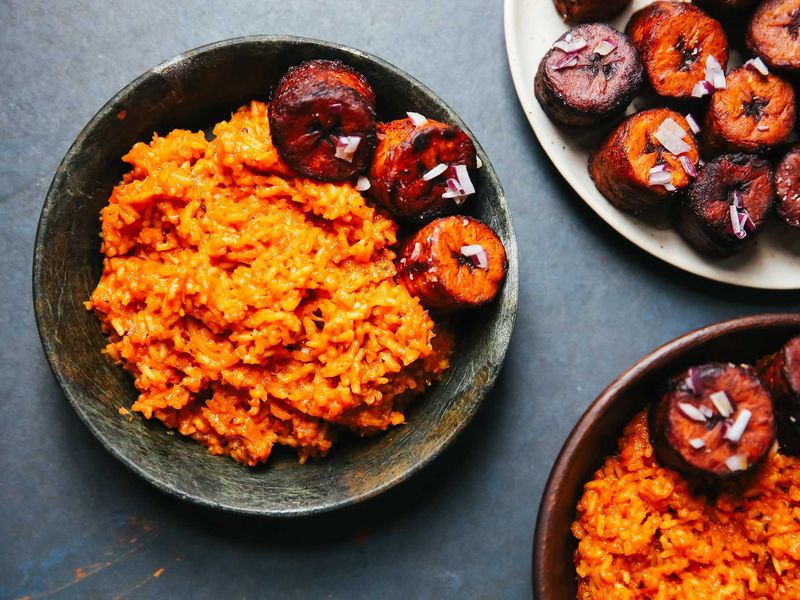
Jollof Rice is a West African favorite, sparking friendly rivalries about who makes the best version. This dish is a mouthwatering blend of tomatoes, onions, and spices, cooked with rice to create a flavorful and aromatic meal.
Originating from Senegal, its popularity has spread across the continent. Each region adds its twist, making each version unique.
Whether served at weddings or casual gatherings, Jollof Rice is a symbol of celebration and unity. It’s enjoyed by all ages, bringing joy to every occasion.
3. Bunny Chow
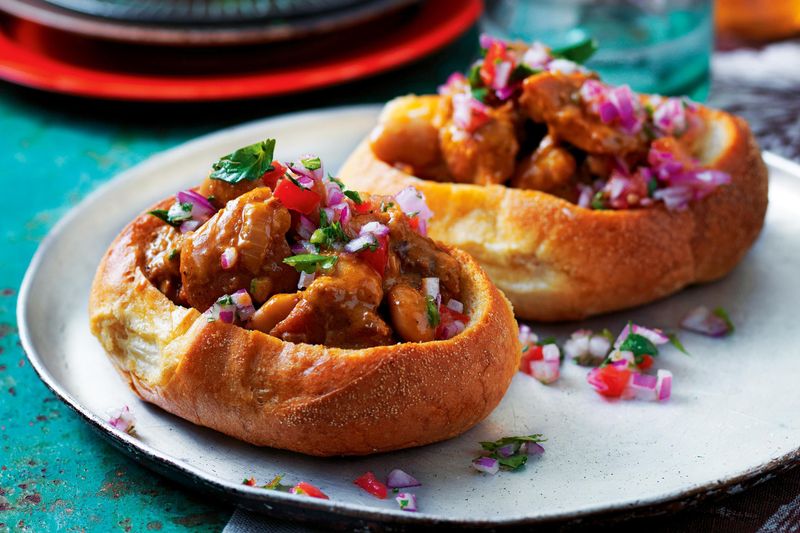
Bunny Chow, originating from Durban, South Africa, is a delightful fusion of Indian and African culinary traditions. A hollowed-out loaf of bread is filled with savory curry, creating a satisfying and hearty meal.
This dish traces back to Indian laborers in South Africa, blending spices with local ingredients. It’s a convenient and tasty street food beloved by many.
Despite its humble beginnings, Bunny Chow has become an iconic South African meal. The combination of spicy curry and soft bread is irresistible and has a loyal following.
4. Tagine
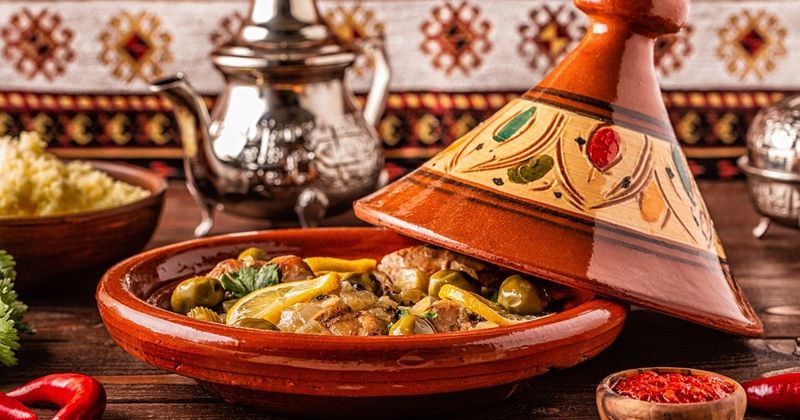
Tagine is not just a dish; it’s an art form in Moroccan cuisine. Named after the clay pot it’s cooked in, tagine brings together meat, vegetables, and spices in a slow-cooked stew.
The cone-shaped lid helps trap steam, infusing the ingredients with rich flavors. From tender lamb to aromatic spices, each bite is a taste of Morocco’s culinary heritage.
Tagine is more than just a meal; it’s a communal experience, often shared with family and friends. Its warm, inviting aroma fills the air, transporting you to the streets of Marrakesh.
5. Koshari

Koshari is Egypt’s national dish, a harmonious blend of rice, lentils, and pasta topped with spicy tomato sauce and crispy onions. It’s a comfort food that warms the soul and fills the belly.
The dish dates back to the 19th century and reflects Egypt’s multicultural influences. It’s a street food favorite, offering a satisfying and affordable meal.
Each layer adds texture and flavor, making every bite a delightful surprise. Koshari is a testament to Egypt’s rich culinary history and innovation.
6. Biltong
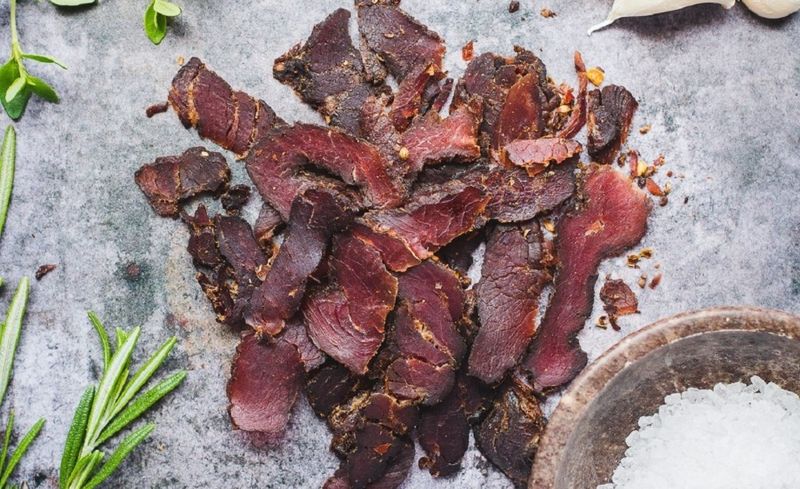
Biltong, a South African treasure, is a dried, cured meat snack similar to beef jerky but with a unique twist. It’s seasoned with spices and vinegar, then air-dried to perfection.
Originally a method to preserve meat, biltong has become a beloved snack enjoyed during road trips, hikes, or just as a savory treat.
With a variety of flavors ranging from spicy to sweet, biltong caters to diverse tastes. Its rich texture and robust flavor make it a must-try for meat lovers.
7. Bobotie

Bobotie, a classic South African dish, is a delightful combination of minced meat, spices, and a creamy egg topping. This comforting bake is often served with yellow rice and chutney.
Its roots trace back to Indonesian settlers, blending their spices with local ingredients. The result is a sweet and savory dish that’s rich in flavor.
Bobotie is a culinary treasure, showcasing South Africa’s diverse influences. It’s a favorite in many households, bringing warmth and nostalgia to the table.
8. Fufu
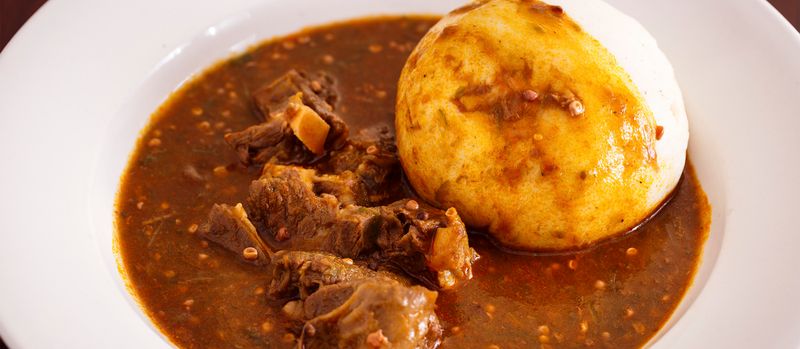
Fufu is a beloved staple across West and Central Africa, often paired with soups and stews. This starchy side dish is made from boiled and pounded yams or cassava, creating a smooth, elastic texture.
Its mild flavor complements the bold spices and flavors of African dishes, making it a versatile addition to any meal.
Fufu is more than just a side dish; it’s a cultural experience. Eating with your hands is encouraged, allowing you to fully engage with the meal and its rich traditions.
9. Piri Piri Chicken
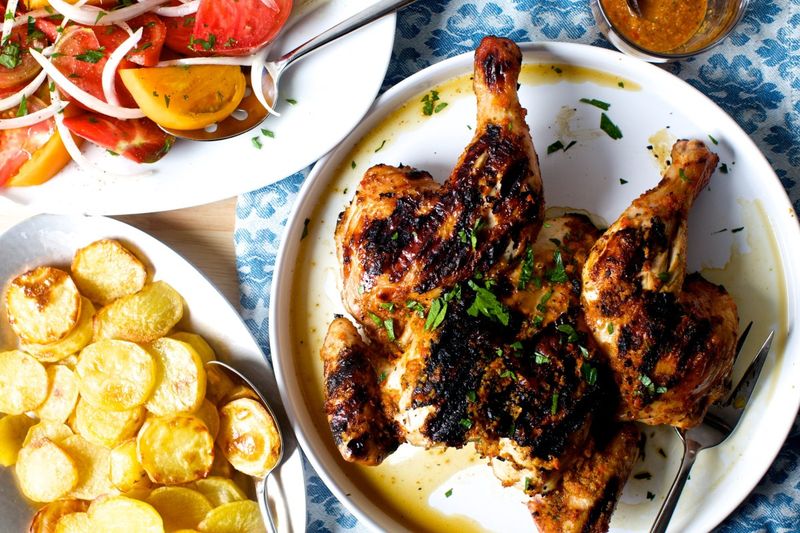
Piri Piri Chicken is a fiery dish from Mozambique that will tantalize your taste buds. The chicken is marinated in a spicy piri piri sauce made from chili peppers, garlic, and citrus.
Grilled to perfection, the chicken is juicy, spicy, and full of bold flavors. It’s a favorite at barbecues and gatherings, bringing heat and excitement to the table.
Piri Piri Chicken is not just about the spice; it’s about celebrating Mozambique’s culinary heritage. The dish embodies the passion and vibrancy of its people.
10. Muamba de Galinha
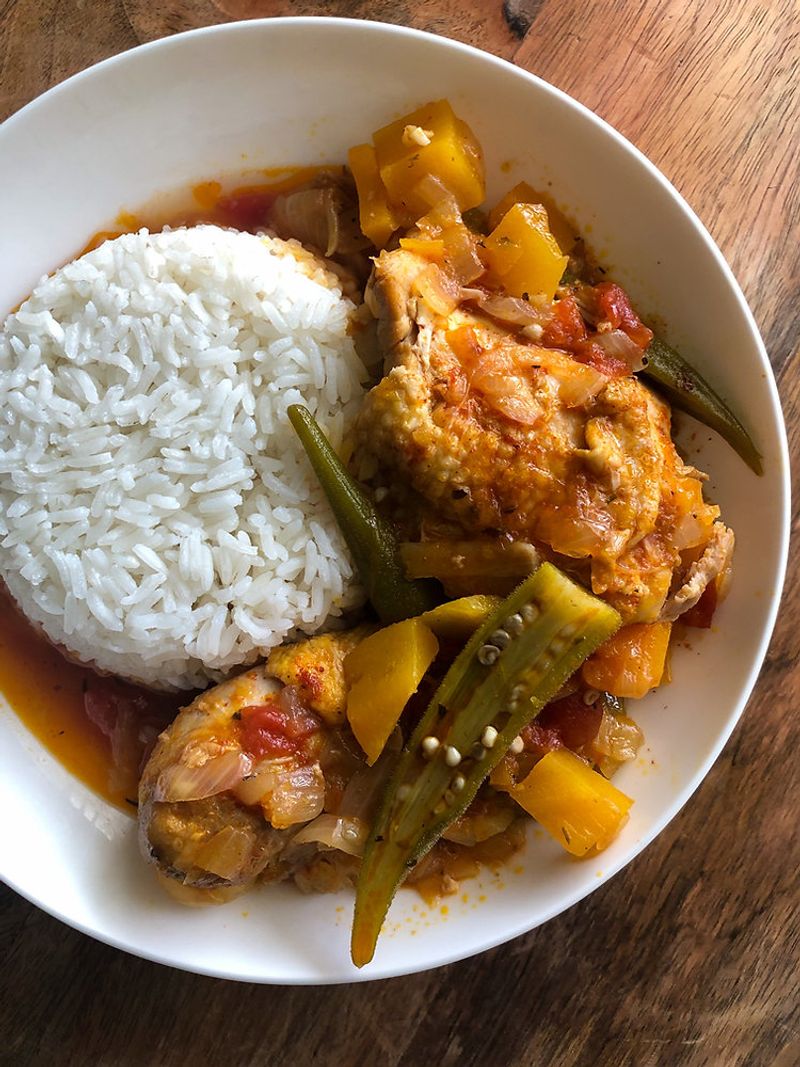
Muamba de Galinha is a flavorful Angolan chicken stew that showcases the richness of African cuisine. Cooked with palm oil, garlic, and spices, this dish is an explosion of flavors.
The addition of okra and vegetables adds texture and color, making it a hearty and satisfying meal. It’s often served with rice or funge, a starchy side dish.
Muamba de Galinha is a celebration of Angola’s culinary traditions. Each bite transports you to its vibrant culture and warm hospitality.
11. Biryani
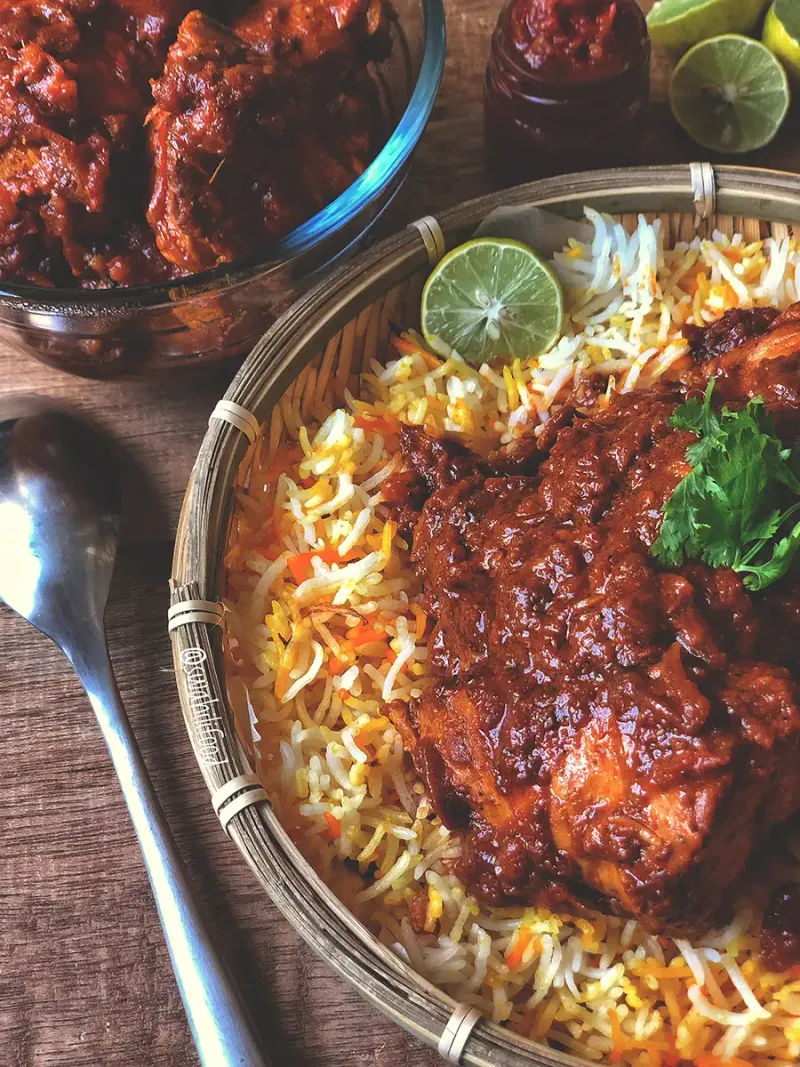
Biryani is a fragrant and flavorful rice dish popular in East Africa, with roots tracing back to Indian and Persian influences. It’s a delightful blend of rice, meat, and aromatic spices.
The dish is cooked slowly, allowing the flavors to meld together, creating a culinary masterpiece. It’s often garnished with herbs and fried onions, adding a burst of flavor and color.
Whether served at celebrations or family meals, Biryani is a symbol of joy and togetherness. Its rich history and diverse influences make it a must-try dish.
12. Ugali
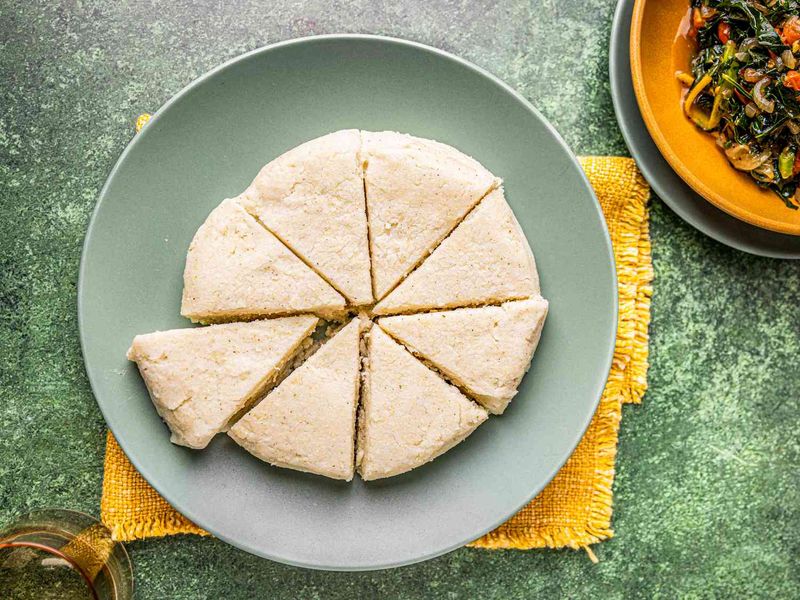
Ugali is a staple in East Africa, known for its simplicity and versatility. Made from maize flour and water, this dense, starchy dish is a perfect accompaniment to savory stews and vegetables.
Its neutral flavor allows it to soak up the rich flavors of African cuisine, making it a beloved choice for many.
Ugali is not just a side dish; it’s a cultural icon. Sharing a meal with Ugali fosters a sense of community and connection among family and friends.
13. Mandazi

Mandazi, a sweet treat from East Africa, is a delightful twist on doughnuts. These soft, fried pastries are lightly sweetened and often enjoyed with a cup of tea.
With a hint of coconut or cardamom, Mandazi offers a unique flavor that sets it apart from typical doughnuts. It’s a popular snack or dessert for both young and old.
Mandazi is more than just a sweet delight; it’s a taste of East African warmth and hospitality. Enjoying Mandazi with friends is a cherished tradition.
14. Chakalaka
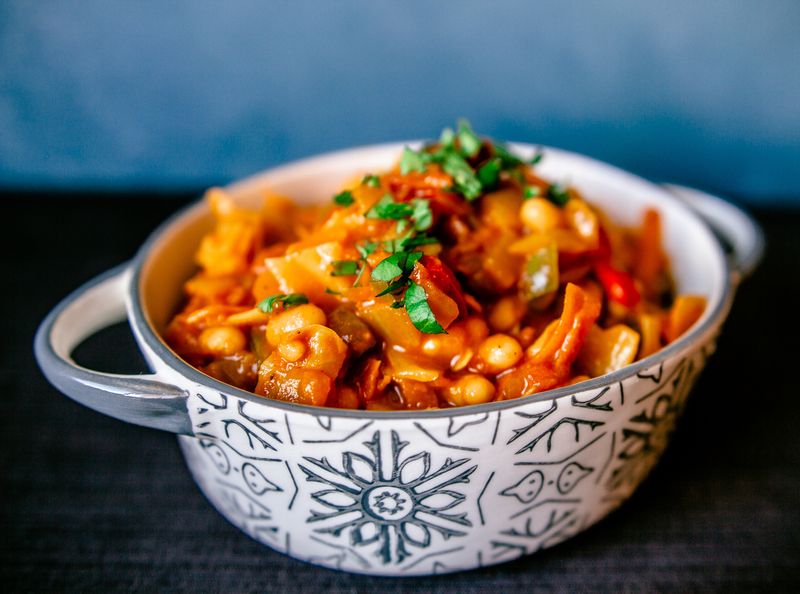
Chakalaka is a spicy vegetable relish that adds zest to any South African meal. Made with a mix of carrots, peppers, beans, and spices, it’s a burst of color and flavor.
This versatile dish can be enjoyed hot or cold, often served alongside meat or bread. Its origins trace back to Johannesburg’s townships, embodying the spirit of South African creativity.
Chakalaka is more than just a side; it’s a celebration of South Africa’s diverse culinary landscape. Its vibrant flavors and textures make it a favorite at barbecues and gatherings.
15. Kapenta
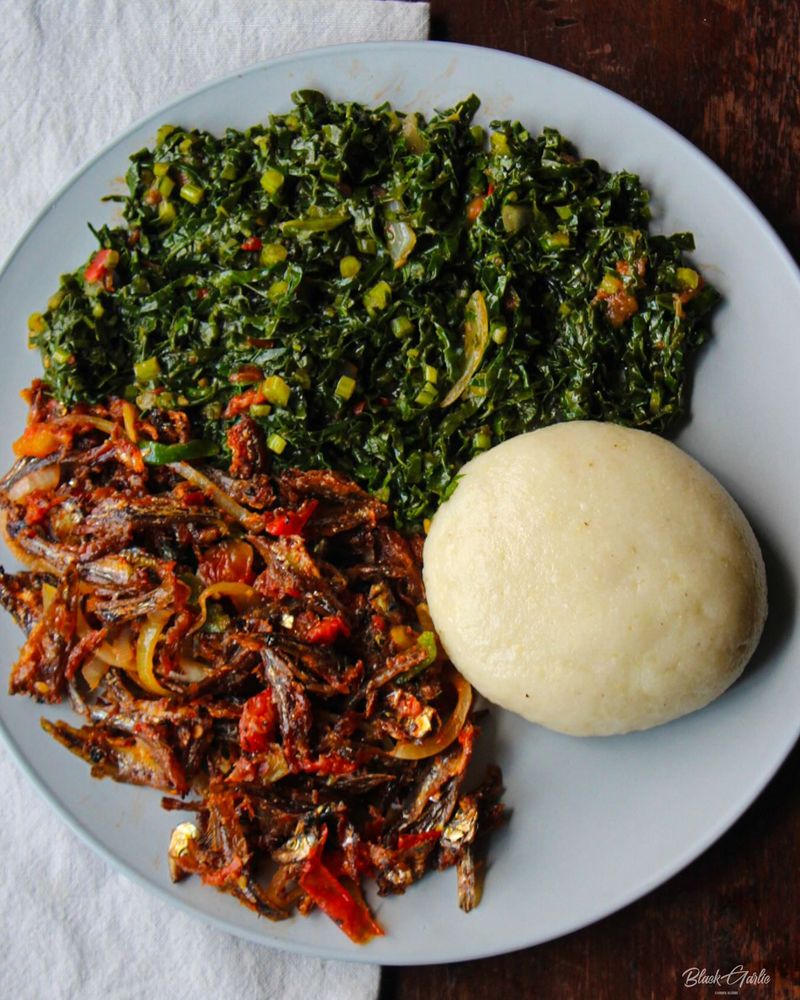
Kapenta, a popular dish in Zambia, is made from small dried fish that’s rich in flavor and nutrients. It’s often cooked with tomatoes, onions, and spices, creating a savory and aromatic meal.
Served with nshima, a maize porridge, and leafy greens, Kapenta is a wholesome and satisfying dish that reflects Zambia’s culinary heritage.
This dish is not only delicious but also a symbol of resourcefulness and tradition. Kapenta’s simplicity and depth of flavor make it a cherished part of Zambian cuisine.
Leave a comment